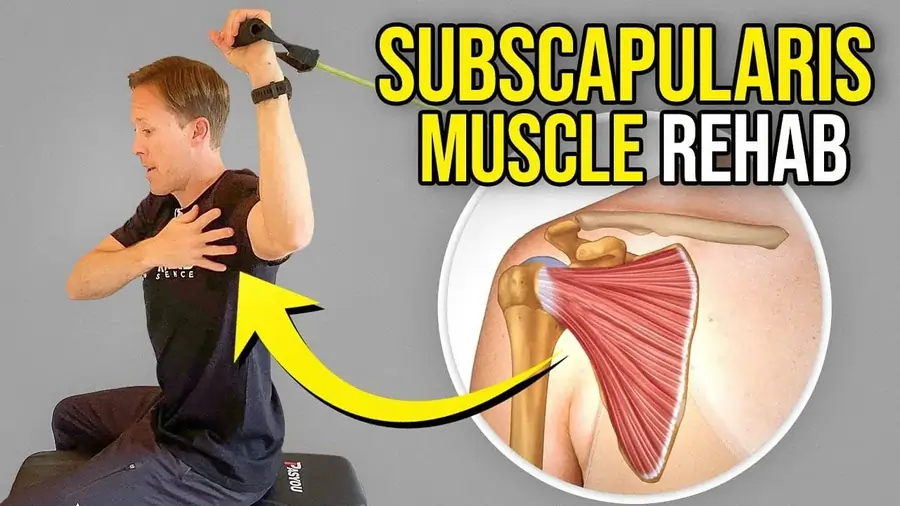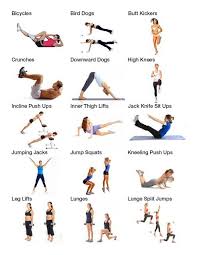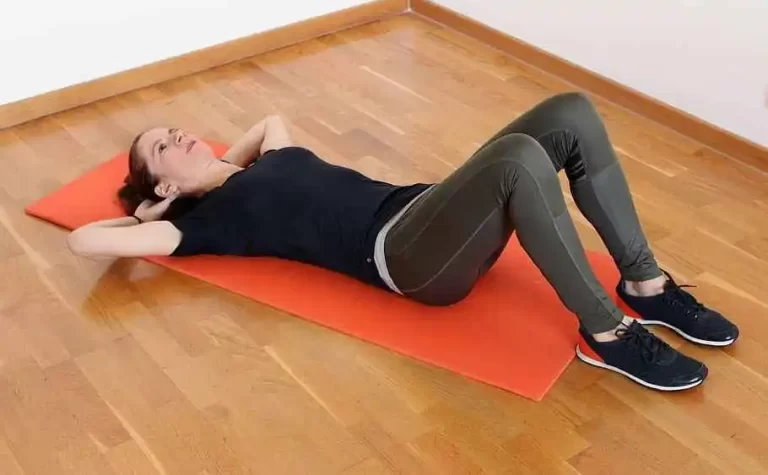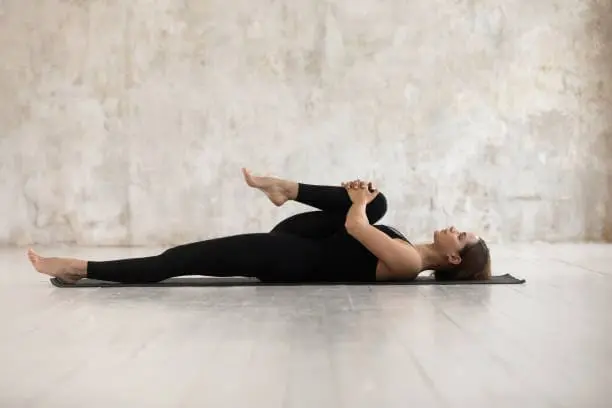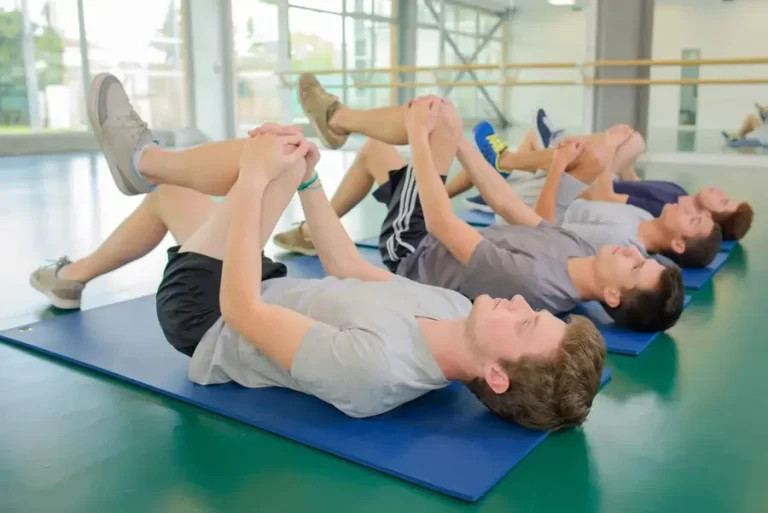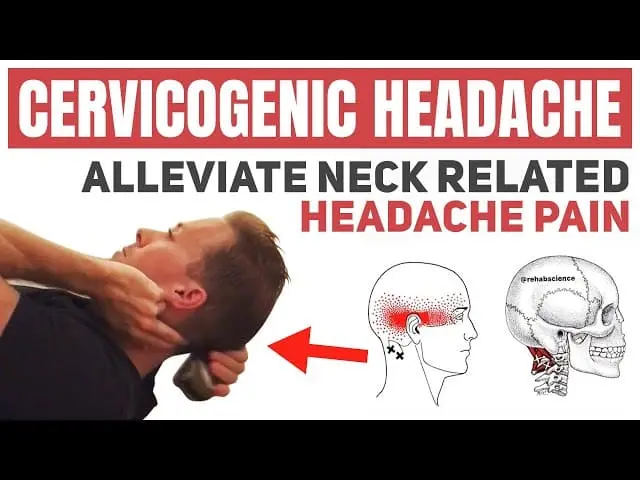14 Best Exercises For Subscapularis Muscle Pain
The subscapularis muscle, located on the front of the shoulder blade, plays a key role in shoulder stability and internal rotation. When it becomes tight, inflamed, or injured, it can lead to pain, stiffness, and limited shoulder movement.
Incorporating targeted exercises can help reduce pain, improve mobility, and restore muscle function. In this guide, we’ll explore 14 of the best exercises to relieve subscapularis muscle pain effectively.
Introduction:
The rotator cuff’s primary function is to draw the arm inward towards the body by internally rotating it. It also stabilises the shoulder joint, guaranteeing proper positioning across a range of motions.
Your shoulder mobility and quality of life might be greatly impacted by subscapularis muscle soreness. The subscapularis, one of the four muscles that comprise the rotator cuff, is essential for both stabilising and moving your shoulder joint. Exercises for Subscapularis Muscle Pain can help reduce pain, increase flexibility, and rebuild strength if you’re having pain in this area.
The internal rotation of the shoulder is mostly controlled by this muscle, which makes it essential for a variety of tasks, including reaching behind the back and tossing a ball.
This muscle’s weakness or damage can cause severe shoulder pain and decreased mobility, which can affect everyday activities and sports performance. Exercises for Subscapularis Muscle Pain help you manage these injuries and speed your recuperation.
Causes:
A comprehensive list of the mechanical, neurological, postural, and systemic causes of subscapularis muscle pain is provided below.
Adhesive Capsulitis (Frozen Shoulder)
- Internal rotation is restricted when frozen shoulder develops because the subscapularis frequently becomes taut and fibrotic.
- Pain may be associated with inflammation of the capsular region involving the insertion of the subscapularis.
Muscle Tear or Strain
- Acute trauma, such as lifting large things or jerking suddenly
- Athletes frequently get repetitive microtrauma from overuse, such as pitchers, tennis players, and swimmers.
- A partial or complete thickness tear, frequently associated with a rotator cuff injury.
The Impingement Syndrome
- It can also happen in other rotator cuff tendons and in general, subacromial impingement.
Myofascial Pain Syndrome and Trigger Points
- Frequently caused by repeated motion or bad shoulder mechanics.
Muscular and Postural Imbalance
- Long-term bad posture, such as forward-leaning heads and rounded shoulders
- Subscapularis stiffness and overcompensation may result from weak posterior rotator cuff muscles, such as those found in desk workers.
Referred Pain or Nerve Impingement
- Thoracic outlet syndrome may be the cause.
Tendinopathy or Tendonitis
- Inflammation or degeneration of the subscapularis tendon as a result of age-related damage or prolonged misuse.
- Frequently linked to rotator cuff tendinopathy.
Following surgery or an injection, fibrosis
- Following shoulder surgery (such as labral surgery or rotator cuff repair), there may be stiffness or scarring.
- Subscapularis soreness and tightness may result from poor physical treatment or improper recovery.
Signs and symptoms:
The symptoms of subscapularis muscle pain are broken down here, along with how it appears, where it is felt, and how it varies from other shoulder pain:
Localized Pain
- The front of the shoulder or beneath the shoulder blade hurts deeply and painfully.
- Sometimes characterized as a “toothache-like” sensation in the front deltoid or underarm area.
- It could be difficult to locate because it’s located deep in the shoulder.
Postural Changes or Muscle Imbalance
Possibly connected by:
- Rounded shoulders
- The forward head posture
- Poor scapular control or scapular winging
Weakness in Certain Motions
- Internal rotation weakness or difficulty (e.g., putting on a bra, reaching behind your back, or tucking in a shirt).
May find it difficult to:
- Put your hand into the rear pocket.
- Put your arm over your chest.
Trigger Points and Tender Muscles
- Palpable deep pain along the inside scapula or under the armpit.
- The subscapularis frequently includes Sensations that are either acute or referred.
Compensatory Patterns of Pain
- Pain or tension that is compensatory in the deltoid or upper trapezius muscles.
- As you move, the shoulder could feel like it’s “overworking” in other places.
Limitations in Range of Motion (ROM)
- Restricted internal rotation and occasionally shoulder abduction.
- When the shoulder is tight, it may feel “locked” or “stuck” during specific motions.
- You may find it difficult to raise your arm all the way, especially inside or overhead.
Pain Referred
Pain might spread to the:
- The posterior deltoid
- Back of the shoulder
- Sometimes it reaches the wrist down the arm.
Night Pain or Uncomfortable Sleep
- When lying on the affected shoulder, the pain may get worse.
- May cause severe pain or make it difficult for you to find a comfortable position, waking you up at night.
Benefits of exercise:
Pain Management and Inflammation Management
- Mild stretching and mobility exercises ease muscular tension and help in the removal of inflammatory mediators.
- Exercise increases blood flow, which speeds up recovery and removes waste products from the body.
- Chronic tendinopathy pain can be lessened by adjusting the tendon with certain isometric and eccentric loads.
Strengthening
- Pain frequently results in muscle atrophy, or weakening from lack of usage, or compensatory overuse of other muscles (e.g., biceps, deltoid).
- For the subscapularis to effectively support shoulder stability and internal rotation, the rotator cuff must be rebalanced by strengthening.
Increased Range of Motion and Flexibility
Shoulder mobility and internal rotation are limited by subscapularis tightness.
Restorative mobility exercises, including stretching:
- Capsular mobility
- Scapular rhythm
- The range of motion that is useful for everyday tasks
Prevention of Injury and Reduction of Recurrence
- Continued maintenance activities after pain decreases lower the chance of re-injury or compensation-related problems.
- Particularly crucial for people performing repeated jobs and sportsmen (such as swimmers and athletes who throw).
Neuromuscular System Reeducation
- Common signs of subscapularis dysfunction include muscle stiffness or poor activation.
- Restoring neuromuscular control with corrective exercises improves the timing and ability of the subscapularis to fire.
- Restores healthy rotator cuff harmony, which is essential to athletes and energetic people.
Stabilization of the Shoulder Joint
The joint between the glenohumeral bones (shoulder joint) is stabilized in large part by the subscapularis.
Making it stronger helps in avoiding:
- Anterior instability
- Rotator cuff tears
- Shoulder impingement
Adjusting Posture and Positioning the Scapula
Weak or taut subscapularis can lead to:
- Scapular winging
- Forward shoulder posture
- Specific exercises help in the restoration of a proper scapulohumeral rhythm, particularly when paired with training for scapular stabilizers and the mid-back.
When beginning an exercise regimen, take into account the following safety measures:
It’s important to consider a few safety measures and minimise the risks before beginning any exercise program. To find out which exercises are best for your particular issue, speak with your doctor or physical therapist.
It’s critical to listen to your body and refrain from resisting pain. While some pain is normal during exercise, persistent or intense pain may be a sign that you’re exerting yourself too much. As soon as you can tolerate greater pain, start with low-impact exercises and work your way up to harder ones.
Maintaining proper form and technique is essential to avoiding recurrent injuries. See a doctor if you’re unsure about how to carry out a workout regimen. To properly prepare your joints and muscles for the activity, warm up before beginning any exercise.
Exercises For Subscapularis Muscle Pain:
Arm Circles
- Begin by standing comfortably on the floor.
- Next, raise your arms and extend them out to the sides.
- Now your body forms a T shape.
- Create little circles with your arms.
- Then return to your neutral position.
- Then relax.
- Repeat these exercises 5 to 10 times.
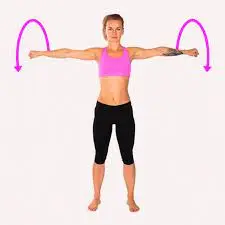
Resistance Band Internal Rotation
- Select a band that is the right strength.
- Tie the band around the elbow height.
- Make a 90-degree bend with your right elbow.
- Maintain a neutral grip on the band with your left hand.
- Pull the band as far as you can with your arm while you exhale.
- Hold this position for a few seconds.
- Then return to your neutral position.
- Then relax.
- Repeat these exercises 5 to 10 times.

Passive Internal Rotation
- Start by keeping yourself straight on the ground.
- Holding the stick behind your back with one hand, firmly grasp the other end.
- The shoulder can be passively stretched by moving the stick horizontally as indicated, until it feels pulled but not uncomfortable.
- Hold this position for a few seconds.
- Then return to your neutral position.
- Then relax.
- Repeat these exercises 5 to 10 times.

Scapular Retraction
- Start with a standing position.
- Maintain your arms at your sides.
- Slowly squeeze your shoulder blades together.
- Hold this position for a few seconds.
- Release slowly until your shoulders are in neutral again.
- Then return to your neutral position.
- Then relax.
- Repeat these exercises 5 to 10 times.
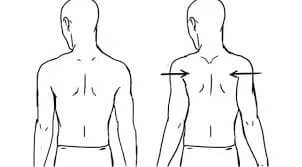
Pendulum
- Take a seat next to a table or chair.
- To give your body support, place your unaffected arm on the table.
- Your weak arm should be allowed to hang freely.
- Using your body motions instead of your shoulder muscles, gently swing your arm.
- Make little circles in clockwise and anticlockwise directions.
- Gradually increase the circle’s size as acceptable.
- Then return to your neutral position.
- Then relax.
- Repeat these exercises 5 to 10 times.
- Repeat with other side.
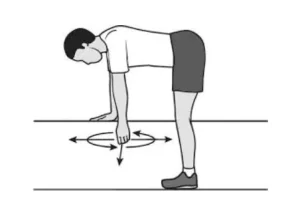
Prone Horizontal Abduction
- Begin on the bed in the prone posture.
- You should have your affected arm hanging over the edge of the bed or table.
- Stretch your arm outwards through it is at eye level.
- Hold this position for a few seconds.
- Lower your arms slowly.
- Then return to your neutral position.
- Then relax.
- Repeat these exercises 5 to 10 times.
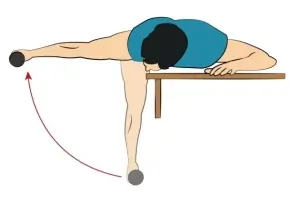
Towel stretch
- Begin by standing on the ground.
- One hand should be used to hold a towel behind your back.
- Place the healthy arm at the top and the affected arm at the bottom.
- Gently pull forward with the top hand.
- The posterior capsule and internal rotators are then extended by extending the lower arm.
- Hold this position for a few seconds.
- Then return to your neutral position.
- Then relax.
- Repeat these exercises 5 to 10 times.
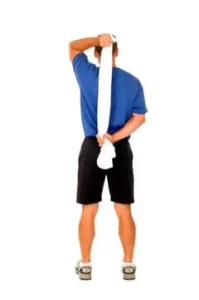
Doorway stretch
- Start by standing in a doorway.
- Maintaining a 90-degree angle between your arms and elbows.
- Put your hands on the front door frame’s sides.
- Take a step forward with your right foot.
- Bend forward and activate your core.
- Hold this position for a few seconds.
- Then return to your neutral position.
- Then relax.
- Repeat these exercises 5 to 10 times.
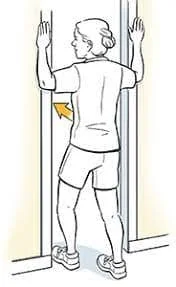
Bear hugs
- Raise your arms wide, take a deep breath, and stand tall.
- To hug yourself, exhale and cross your arms, putting your left arm over your right and your right arm over your left.
- Inhale deeply.
- With your hands, now pull your shoulders forward.
- Maintain this position for a few seconds.
- To let go, take a breath, and spread your arms wide again.
- Then return to your neutral position.
- Then relax.
- Repeat these exercises 5 to 10 times.
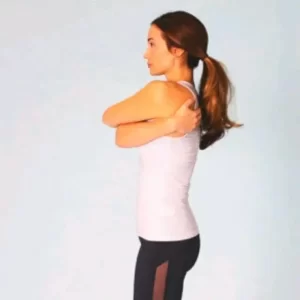
Scapular wall slide
- Take a comfortable position across from the wall.
- Next, put your hand on the wall.
- Lightly press a small roller on the wall with your hands.
- At this point, tighten your shoulder blades.
- Raise your forearms slowly up the wall after extending your elbows.
- Then return to your neutral position.
- Then relax.
- Repeat these exercises 5 to 10 times.
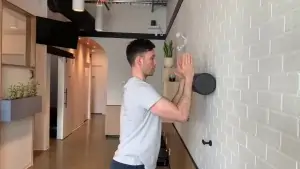
Sleeper Stretch
- Lying on the affected side.
- Place your shoulder beneath you.
- You can put a pillow under your head. Straighten your elbow from your shoulder.
- Bend your arm at the elbow and point your fingers at the ceiling.
- Keep your arm bent in this L posture.
- Using your other hand, thrust your forearm down towards the floor.
- As much pressure as is comfortable should be applied.
- Then return to your neutral position.
- Then relax.
- Repeat these exercises 5 to 10 times.
- On the opposite side repeat.
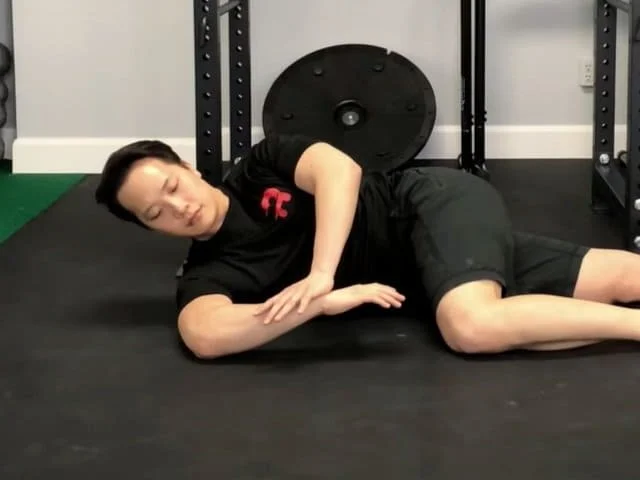
Push up plus
- Start with the standard push-up position.
- Maintaining a straight posture, raise the chest by pushing the hands into the ground.
- The hips and lower back should stay largely neutral during the exercise. Strive for a methodical, slow pace.
- After here, slowly lower the chest while pulling the shoulder blades closer together.
- As the action comes to a close, you should feel a tiny pinching sensation in your shoulder blades.
- Hold this position for a few seconds.
- Then return to your neutral position.
- Then relax.
- Repeat these exercises 5 to 10 times.
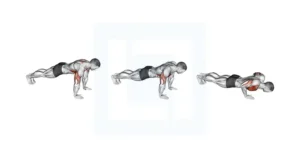
Cross-body stretch
- Get up straight first.
- With one arm folded across your chest.
- Using the other hand, take the arm across your body by the outer forearm.
- Move that arm deeper into your body for more stretch.
- Hold this position for a few seconds.
- Then return to your neutral position.
- Then relax.
- Repeat these exercises 5 to 10 times.
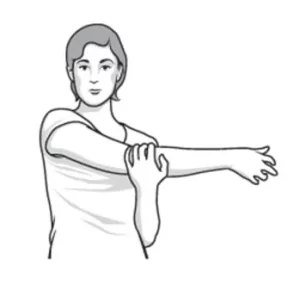
Standing Row
- Start standing on the ground in a position that feels comfortable.
- Your shoulder’s back should feel stretched.
- Fasten the loop to something sturdy, like a doorknob.
- Hold the band by your side while standing with your elbow bent.
- Carefully straighten your elbow while keeping your arm by your side.
- With your shoulder blades contracted together, pull.
- Hold this position for a few seconds.
- Then return to your neutral position.
- Then relax.
- Repeat these exercises 5 to 10 times.
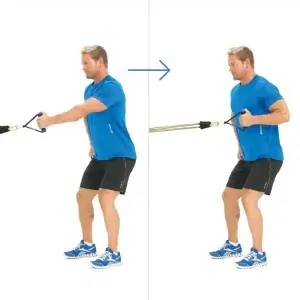
When exercising, what safety measures should be followed?
Exercise for subscapularis muscle pain relief or rehabilitation must be done safely to prevent aggravating the injury, producing compensating problems, or irritating surrounding tissues.
Here is a thorough guide on safety precautions you should take to make sure your workouts are safe, suitable, and healing rather than damaging.
Get Well Warmed Up
- Use gentle, dynamic exercises to warm up the shoulder girdle, such as arm circles and pendulum swings.
- Before stretching, using a little heat (such as a hot pack) will help enhance tissue flexibility.
Make a Gradual Advancement
- Start with painless, low-load workouts.
- Avoid the “no pain, no gain” mentality.
- While a little pain is acceptable, severe agony is not.
Stay away from end-range loading and overhead (first)
- At the beginning, stay away from: High-pressure overhead pressing.
- Unexpected internal rotation when under strain, making a strong reach behind your back
Make Use of the Right Resistance and Range
- Start with little weights or resistance bands.
- Start with a pain-free range of motion and progressively expand it as your mobility improves.
Pay attention to rest and healing time.
- Do not engage in daily subscapularis exercises.
- Between sessions, give the muscle 24 to 48 hours to adjust and recuperate.
Keep an eye out for inflammation after exercise.
- Although some slight stiffness is to be expected, keep an eye out for:
- Pain at night, sharp pain, and swelling. If you have soreness after exercising, use ice.
Monitor Development and Adjust as Necessary.
Record the following:
- Levels of pain: Exercises, Resistance, sets, and repetitions
- Adjust according to the degree of pain, fatigue, or advancement.
Concentrate on Pain-Free, Controlled Motions
- Exercises have to be performed attentively and gradually.
- Make use of mirrors, video feedback, or the advice of a therapist to guarantee correct form.
When did you stop exercising?
A thorough guide on when and why to stop, pause, or adjust activities for subscapularis pain could be given below.
Pain that is sudden, sharp, or stabbing
- When performing an activity, especially when reaching behind your back or performing internal rotation, if you suddenly feel a severe pain
- It may get worse if you keep going.
Pain at Night Gets Worse
- It’s a warning sign if your shoulder ache keeps you up at night, especially if you worked out that day.
- Inflammation or tendon stress is frequently indicated by night pain.
Bruising or Swelling Appearance
- While uncommon, this is significant.
- Following subscapularis training, swelling or bruising may be a sign of a strain or tear, particularly if it is accompanied by pain or weakness.
- Quit working out and get checked out right away.
Radiating pain, tingling, or numbness
- Stop right away if the pain radiates down your arm or if you experience burning, numbness.
- These are neurological symptoms that need to be examined by a doctor.
Pain After Exercise That Remains or Gets Worse
- Especially in recovery, little pain is OK.
- Overloading or improper form is indicated by persistent post-exercise pain.
- Range of motion, repetitions, or intensity may need to be decreased.
Increasing Weakness During or Following Physical Activity
- Stop right away if your arm “gives out” or if you realize that it is getting markedly weaker, especially when internal rotation is taking place.
- This may indicate nerve involvement, severe fatigue, or a partial or complete rupture.
Catching Sensations, Clicking, or Popping
- It might just be a slight clicking in the shoulder.
- However, painful or audible pops or the feeling that the shoulder is “catching” or “sticking” while rotating are abnormal and require examination.
Summary:
Maintaining an active lifestyle requires an awareness of and attention to subscapularis muscle problems. Certain stretches and strengthening exercises can be combined to successfully manage and prevent subscapularis-related conditions.
Even though subscapularis muscle soreness can be painful and incapacitating, recovery is possible with the right exercises and approach. Restoring shoulder function and minimising pain requires a focus on progressive strengthening, isometric activation, and mild stretching.
Over time, the subscapularis muscle‘s range of motion and strength can be increased by consistent stretching. A medical expert should be consulted before starting any stretching or exercising regimen, though. They can offer you guidance on the right form and technique to guarantee results that are both safe and efficient.
FAQ:
What is the purpose of the subscapularis muscle?
One of the four rotator cuff muscles, the subscapularis, is situated on the front of the shoulder blade. Stabilization of the shoulder joint and internal rotation of the shoulder are its primary functions.
If I have pain in my subscapularis, can I still exercise?
Yes, as long as the pain is not severe or acute, it is typically advised to perform focused, mild workouts. Start with controlled, low-resistance motions and stay away from activities that worsen pain.
Which exercises are most effective for treating subscapularis pain?
Isometric internal rotation
Wall slides
Pendulum swings
Internal rotation with resistance bands
Sleeper stretch
How frequently must I perform the exercises?
When minor range-of-motion activities are performed, acute pain occurs once or twice daily.
Recuperation phase: three to four times weekly
To stop a return, perform maintenance two to three times every week.
Should you use ice or heat before or after working out?
To increase muscle warmth and flexibility, apply heat beforehand. After exercising, use ice if you have any pain or irritation.
What is the duration of recovery?
Mild cases: two to four weeks of regular rehabilitation.
Recovery time following surgery or tears: at least 8–12 weeks.
At what point should I stop working out?
Don’t continue if you come across:
A sharp or stabbing ache
Inflammation or bruises
Weakness, numbness, or tingling
Sounds like clicking or catching
After exercising, the pain becomes worse
Can subscapularis soreness be caused by bad posture?
Indeed. The subscapularis may be overworked by rounded shoulders and insufficient scapular control. Posture correction and scapular stability should also be the main goals of the exercises.
Should I strengthen in addition to stretching?
You require both:
Stretching eases stress and increases flexibility.
Joint stability and muscular balance are restored by strengthening.
References:
- O’Flaherty’s 2018 home workout program for strengthening the subscapularis
- WebMD Editorial The contributor: Subscapularis Strain Shoulder Recovery Exercises – 2025
- Restore your shoulder: Successful therapies for injuries to the subscapularis muscle – 2024 – Bablitz-Parker.
- Exercises for the subscapularis muscles to strengthen the rotator cuff – 2024 – Creative
- Program for shoulder and rotator cuff conditioning, American Academy of Orthopaedic Surgeons
- Exercises for strengthening or healing the rotator cuff – 2024 – Barta
- In 2025-E, the Top 5 Subscapularis Exercises for Rotator Cuff Rehabilitation
- Four Effective Subscapularis Stretches and Exercises (2025) Make your first appearance.
- The Top 8 Subscapularis Exercises & Stretches for 2023 Nora
- Image 12, Guide, Advantages, and Form for Push-up Plus 2023 Lift Manual

